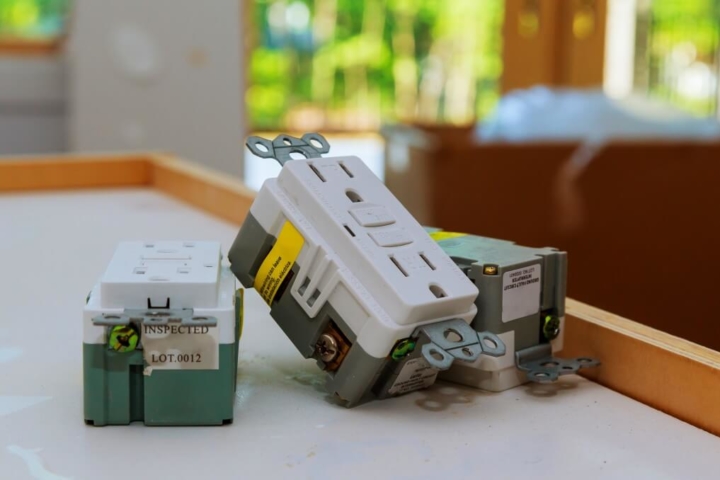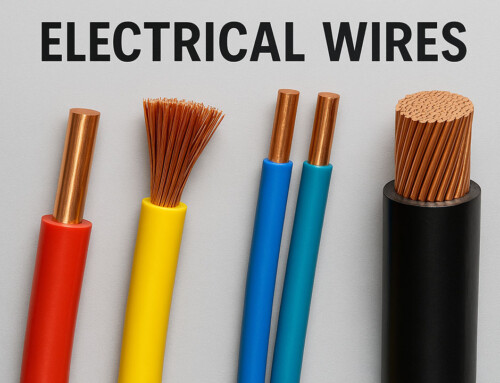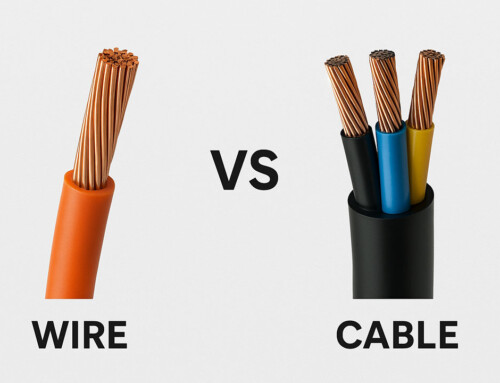Table of Contents
Table of Content
- What is a GFCI Outlet?
- How does a GFCI Outlet work?
- Where is a GFCI Outlet Needed?
- Why Does the GFCI Outlet Trip and What to do When it Trips
- Benefits of Installing GFCI Outlet
- How to install the GFCI Outlet
- Self-Testing Your Ground Fault Circuit Interrupter
What is a GFCI Outlet?
A ground fault circuit interrupter Outlet (GFCI outlet) is a protective device specifically designed to break the circuit every time there is an imbalance between incoming and outgoing current. The GFCI outlet protects electrical wiring from overheating and possible fire, greatly minimizing the risk of shock injuries and fatal burns. It also detects ground faults and disrupts the flow of current but should not be used to replace a fuse as it does not offer protection against short circuits and overloading.
How does a GFCI Outlet work?
The GFCI is integrated in the electrical outlet and constantly tracks the current flowing in a circuit to sense fluctuations in real-time. It has three holes: two of the holes are for neutral and hot wire and the third hole in the middle of the outlet serves as a ground wire. If it detects any change in the electrical flow in the circuit, it will immediately cut off the flow of electricity. So, if you are using a hair dryer for instance and it slips into a sink that is filled with water, the GFCI outlet will immediately sense the interruption and cut the power to ensure electrical safety in the bathroom and beyond.
Where is a GFCI Outlet Needed?
GFCI outlets are important, especially when the electrical outlets are positioned close to water. Installing GFCI outlets in your kitchen, bathrooms, laundry rooms, pool house etc., is a good idea. Apart from being an essential preventive measure, the law also requires you to have GFCI outlets installed throughout your home. According to National Electric Code (NEC), all homes must be equipped with GFCI protection. Initially, it was only required for you to install GFCI outlets near water but this requirement has been extended to cover all single phase outlets of 125 volts in recent years. GFCI outlets should also be installed on temporary wiring systems during construction, renovation or maintenance of structures that are using power temporarily.
Why Does the GFCI Outlet Trip and What to do When it Trips
The ground fault circuit interrupter is essentially designed to avert ground faults by immediately disrupting the flow of current from the outlet. This is why periodic testing is very important to ensure that the GFCI outlet is functional at all times. If the GFCI outlet is tripping often, it probably needs further investigation by a certified electrician as it could also be a result of worn out insulation, accumulated dust, or deteriorated wiring.
Benefits of Installing GFCI Outlet
Apart from the peace of mind that you and your family are protected against electrocutions, installing GFCI outlets will help you:
-
Prevent Shocks
Electrical shocks and electrocution are the major risks that you can be exposed to through electrical devices at your home. This becomes a bigger concern if you have kids who can unknowingly touch the appliances and get a shock. A GFCI outlet helps in preventing shocks and electrocutions as it has a built-in sensor that monitors the inflow and outflow of the electricity from any appliance. If a live wire inside the appliance comes in contact with the metallic surface of the appliance, you will get a shock when you touch it.However, if you plug the appliance into the GFCI outlet, then it will notice if there is any change in the electrical flow which may occur due to a loose wire and it will instantly shut down the power. They will be heavier on your pockets as compared to regular outlets, but the safety advantage will definitely outweigh the cost disadvantage in the long run.
-
Avert Fatal Electrical Fires
One of the main functions of a GFCI outlet is to detect the ground faults, which occur when the flow of electrical current leave a circuit. They are responsible for causing electrical fires. When you install GFCI outlets, you are effectively preventing electrical fires from occurring. You might argue that electrical fuses also provide basic protection against electrical fires, however, when you combine them with GFCI outlets, the chances of electrical fires erupting and harming you and your loved ones will almost reduce to zero.
-
Avoid Damage to Appliances
There is a good chance that the insulation of an appliance will break over time. If not a break, there will certainly be a few cracks in the insulation. Some amount of electric current starts to leak through these cracks into the appliances and other electronic items. If the appliance’s outer body isn’t metal, then you won’t get a shock but the constant leakage of the current will damage the equipment in the long run. If it has a metal body, then you will experience electric shocks as well.However, when you have an appliance connected to the GFCI outlet, you can quit worrying about your appliances getting damaged due to leaked current. The GFCI circuit will detect the leak and shut down the circuit, preventing electrical leaks from damaging expensive equipment and appliances. You can save a lot of money by not having to constantly repair or replace your damaged electrical devices.
How to install the GFCI Outlet
Folow the foloowing steps to install a GFCI Outlet/ Receptacle:
-
-
Check for GFCI Protection in Your Home
-
In most states, building codes now require GFCI plugs to be installed in the wet areas of homes such as laundry rooms, baths, kitchens, garages, and other places that may be prone to electrical shocks caused by moisture. So, check your home to see if it has any GFCI outlets installed.
-
-
Turn Off the Power
-
a) Turn the power off at the fuse or circuit breaker.
b) Remove the wall plate and use a tester to be sure that the power is shut off.
-
-
Remove the old outlet
-
a) Remove the existing outlet which the GFCI plug will replace, and pull it out of the circuit box.
b) This will expose 2 or more wires. Ensure that the wires do not touch each other and then turn the switch on.
c) Use a tester to identify the wires that carry power.
d) Mark those wires and shut the power off again.
-
-
Install the GFCI Outlet
-
The GFCI outlet consists of 2 sets of wires marked as ‘line’ and ‘load’. The line set carries the incoming power and the load set distributes the power among additional outlets while also providing shock protection. Connect the power wire (black) to the line set and the white wire to the load set on the GFCI outlet. Secure the connections using a wire nut and wrap them using electrical to tape for extra safety. Now connect the ground wire to the green screw on the GFCI plug.
-
-
Put the GFCI plug back in the box and cover it again using a wall plate
-
Carefully put the GFCI outlet in to the box and mount the wall plates properly
How to Self-Testing Your Ground Fault Circuit Interrupter?
It is recommended that GFCI outlet should be tested every month and replaced every decade. You can follow these simple steps to test if the circuit interrupter is working properly:
- The face of the GFCI outlet features two small buttons that are labeled test and reset. Simply press the test button and this will trigger a snap sound which indicates that the outlet has tripped.
- Once the power trips, you can check the efficiency of the GFCI unit using a voltage meter.
- Now plug in a device into the outlet and when it stops working, press the test button so you can be sure of the safety mechanism.
- Once you know the CFGI outlet is working at peak efficiency, you can press the reset button and the circuit interrupter will be turned on once again.
While these DIY instructions are easy-to-follow, they do require that you are familiar with and understand the functioning of your home’s electrical system. It is always recommended to work with a certified electrician who can ensure that your system is in compliance with relevant codes so your home remains guarded against electric fires.
You should definetly install GFCI outlets, both at your home and workplace, primarily for safety reasons. Remember to get them installed only from the licensed electricians and professionals. You cannot put a price on the safety of your loved ones and GFCI outlets will offer you a peace of mind in that aspect.
We, at D & F Liquidators have high quality GFCI outlets that you can install at your home at competitive prices. Contact us to know more.
FAQs
1. Are GFCI outlets required in older homes?
If you reside in an older home, GFCI outlets may not be installed until you undertake some rewiring. Even if you aren’t compelled to have them, getting them installed is a good idea. The National Electrical Code requires GFCIs on all outdoor and bathroom outlets. Don’t forget about your kitchen countertop outlets; these, too, need GFCIs.
2. Do all GFCI outlets have reset buttons?
Resetting a GFCI outlet is easy! Find the tripped outlet and look for a red reset button in the center of the socket. Once you’ve located it, just click the reset button to restart the outlet. Simple as that!
3. Do I need GFCI outlets?
Yes. GFCI receptacles are mandatory in bathrooms, basements, crawl spaces, garages, laundry rooms, and any water source area. And soon, the National Electrical Code update in 2023 will expand the GFCI requirements to include all kitchen receptacles. So, make sure to stay safe and get those GFCIs installed!
4. What is the difference between GFI and GFCI?
The terms GFI and GFCI refer to the same equipment. GFI is an older phrase that some people still use interchangeably with GFCI. GFCI is the newer and more generally used term. So, if you’re looking for one of these gadgets, remember that they’re effectively the same thing.
5. What should not be plugged into a GFCI outlet?
Large appliances like refrigerators, freezers, and sump pumps should not be plugged into GFCI outlets or circuits. Furthermore, connecting your lights to a GFCI circuit is not a good idea. You don’t want to be in the dark if the circuit fails!
6. What are the types of GFCI?
These are the primary types of GFCIs – tamper-resistant GFCI, weather-resistant GFCI outlet, self-testing GFCI, standard GFCI receptacle, and GFCI circuit breaker.
7. How long does a GFCI outlet last?
GFCI outlets generally have a lifespan of 7-10 years. However, they can fail as young as 5 years old. Every home’s GFCIs should be inspected regularly after 5 years and, if required, replaced to guarantee maximum safety.
8. What happens if a GFCI is wired incorrectly?
It is critical to properly connect GFCIs to avoid severe harm or even death from electrical shock. If you connect the LINE wires to the LOAD terminals by accident, the GFCI will not reset and will not power any receptacles attached to it. So use caution and double-check your wiring!
9. Can I put a GFCI outlet on a regular circuit?
Yes. You can swap out your regular electrical outlet with a GFCI outlet. The best part is that a properly installed GFCI will provide protection to the other outlets on the same circuit. So, it’s like getting an upgrade for all the outlets on that circuit!
10. What happens when a GFCI outlet goes bad?
GFCIs made after mid-2006 have a feature that lets you know when they fail. Almost all of them indicate failure by shutting off power permanently. This means that one day, your GFCI (and any other outlets linked to it) could stop delivering power. But don’t worry, it just means it’s time to replace it.
11. How much does a GFCI circuit breaker cost?
GFCI breakers can cost $40 to $50, although ordinary breakers are merely $4 to $6. A GFCI receptacle, on the other hand, costs about $15 on average.
12. How to wire a GFCI outlet with multiple outlets?
You might use several approaches when connecting a GFCI outlet to several outlets. One frequent method is to put the GFCI at the first outlet and then connect everything else in series along the line. Don’t forget to join the wires to the GFCI’s load side so that electricity may flow to the other outlets.
13. Do garage outlets need to be GFCI?
Yes, GFCI-rated outlets are required for the garage and garage door openers.
14. How to fix the red light on the GFCI outlet?
If you do a self-test on your GFCI and it identifies a problem, you may observe a solid or flickering red light. But don’t worry. Simply press the TEST and RESET buttons to reset the GFCI. If it successfully resets, you’re good to go!
15. Can you wire two GFCI outlets together?
It is possible to install numerous GFCI-rated outlets on a single circuit, but there is a catch. If one of the outlets trips or fails, all of the other outlets downstream are impacted. As a result, it’s critical to test your GFCIs once a month to ensure they’re operating correctly and to avoid any potential problems.






